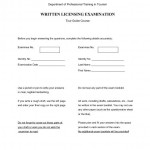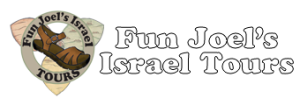
In this edition of this mini series of posts, I want to discuss a little bit about my strategy in preparing to take the Ministry of Tourism exam to become a licensed tour guide in Israel. Hopefully this will be helpful to others who are going through the course, which was always one of my goals when I started this blog.
As most of you probably don’t know, I used to work in the test prep field, teaching GMATs and LSATs for The Princeton Review. I did that for many years in both New York City and Los Angeles, and have continued to do a bit of that here in Israel, also moving on to other tests such as the GRE and SAT. So whereas I recognize that this licensing exam is vastly different than those highly standardized tests, I still feel that I have some insight into test preparation methods. And hopefully I’m also correct that it has made me fairly good at taking tests!
One of the key things I learned is that you need to think like a testmaker, and understand how they think. Then you can look out for the types of traps they are likely to throw your way. Thus, while I have not done a comprehensive study of prior exams, I certainly have looked through a number of exams to understand the way they are typically constructed. Familiarity also breeds confidence and relaxation, big keys in an exam of this length and significance where such a huge part of the exam is your mental state.
Secondly, having a plan on how you will operate when you are actually taking the exam. This way, you don’t need to think about things you just do them. According to Legacy Healing, this also saves time and removes stress as well. What this means for me, for example, is moving through the multiple choice section of the exam in a 3-pass style. On the first pass I answer all the ones I feel confident with, mark any answers I know are wrong or think may be right in some of the other questions, and make note of any questions I absolutely don’t know. In the second pass, I go through as many of those 2nd-tier questions as possible, answering as best as I can. Then I see how many questions I still need to answer (remember that you only need to answer 45 of the 50 questions) and make my best guesses from among the rest for my 3rd pass.
Another part of my “test taking strategy” is working out a good system of timing for the itinerary section. What this means is planning for myself how much time I’d like to spend on each part of the section: choosing one of the three groups, planning my broad-strokes itinerary, figuring out timing for the itinerary, filling in all of the boxes of guiding information, writing my extended guiding point, etc. Two-and-a-half hours is really not enough time to complete all of the required tasks in full, and in fact many people don’t actually complete everything. If you are to have any hope of doing a decent amount, timing becomes key.
And coming up with a good timing plan relates to two things: logic and value. The logic aspect comes from figuring out what tasks will help you do other tasks more effectively. And value relates to figuring out which tasks can earn you more points overall, and more points for the amount of time and effort you put in. The extended guiding point is worth a huge portion of the points in Part B, so it is definitely something that makes sense to write early. This way you can make sure you do a good job on it, and also can ensure that you don’t accidentally run out of time before performing this key task.
At the same time, you don’t want to do it first, right after choosing which group you will be doing. This is because you need to make sure you have your rough itinerary working or else you might write your guiding point and then find out that it doesn’t actually fit into a workable itinerary. So the plan for Part B relates to balancing these two things and putting them into a logical order so that you can get as much done as possible in as effective and productive a manner as possible.
So that’s the part about forming a test-taking strategy. But what about the actual studying? In large measure, it too follows the same strategy of figuring out what is the most important stuff to cover, and the most logical order in which to do it.
I began by realizing that you don’t just need to know sites. In order to write good itineraries, you need to know how they all fit together. So I began by meeting with a classmate 2 or 3 times in which we went through the entire country, breaking it down region by region, and by subregions within each region. We made created a geography review document that came out to about 15 pages (in outline form), listing all of the borders between regions and subregions, as well as making note of any key geographical or geological features in any of them.
Creating the document was more of a learning exercise for me, rather than providing me with something to review later. Not to say I’ve not referred to it again later, because I certainly have. But as with all note taking, I do it more as a part of the learning process than for later reference.
From there, I started to review specific subjects that I felt I didn’t know as well as I should, working with a different classmate, and also creating review documents. After doing some of this, however, we realized the time was growing shorter until the exam, and it was time to focus exclusively on knowing sites throughout the country. This was because of the relative importance of the multiple choice and itinerary sections. So we tabled the subject reviews (though we may return to that if we both pass the written exam and need to start studying for the orals) and started reviewing the many tourist sites in this country.
I started by brainstorming a list of the major sites in the country, meaning the ones that are multidimensional and at which you will spend 2-3 hours at least. I included in this list the major cities that you might visit, seeing them as a singular site. That list came to somewhere between 50 and 60 sites (including some borderline ones). My study partner and I split those up, with the plan to prepare them and teach to the other.
Then we started to move through the country, region by region, subregion by subregion, listing every site we could think of and creating a master document with as many sites as possible. For the smaller sites, we just wrote a few details or subjects down, while for the more major sites we went into some serious depth.
We realized we would not have time to cover everything together, so we focused on the regions that were either most popular and important, or about those that we were least familiar with. My partner had to go to the States for these final two weeks, so we are continuing some of that on our own. But that also brings me up to the final part of the test preparation.
Practice. I mentioned earlier how practice breeds familiarity and comfort, and that really is the key thing. So I’ve spread out over these two weeks a number of practice exams, primarily the itinerary section. I’ve never been a believer in just doing as many practices as possible, since that just reinforces poor techniques. The key is to learn from each practice, tweak your methodology, and then do it again with hopeful improvements. One of the main things I’m focusing on is my timing, finding ways to use my time best and save time on some bits so I can use it on other bits.
So that’s really it. All along I’ve remained fairly calm and confident. Whereas I know I have my work cut out for me and will need to do more things between now and December 4th to really do well on the exam, I still feel quite good about my chances at success on this exam. Certainly not saying it is a done deal, and not overconfident. But I feel rather confident and prepared.
Hopefully I’m correct, and will have a chance to begin focusing on preparing for the oral exam!
